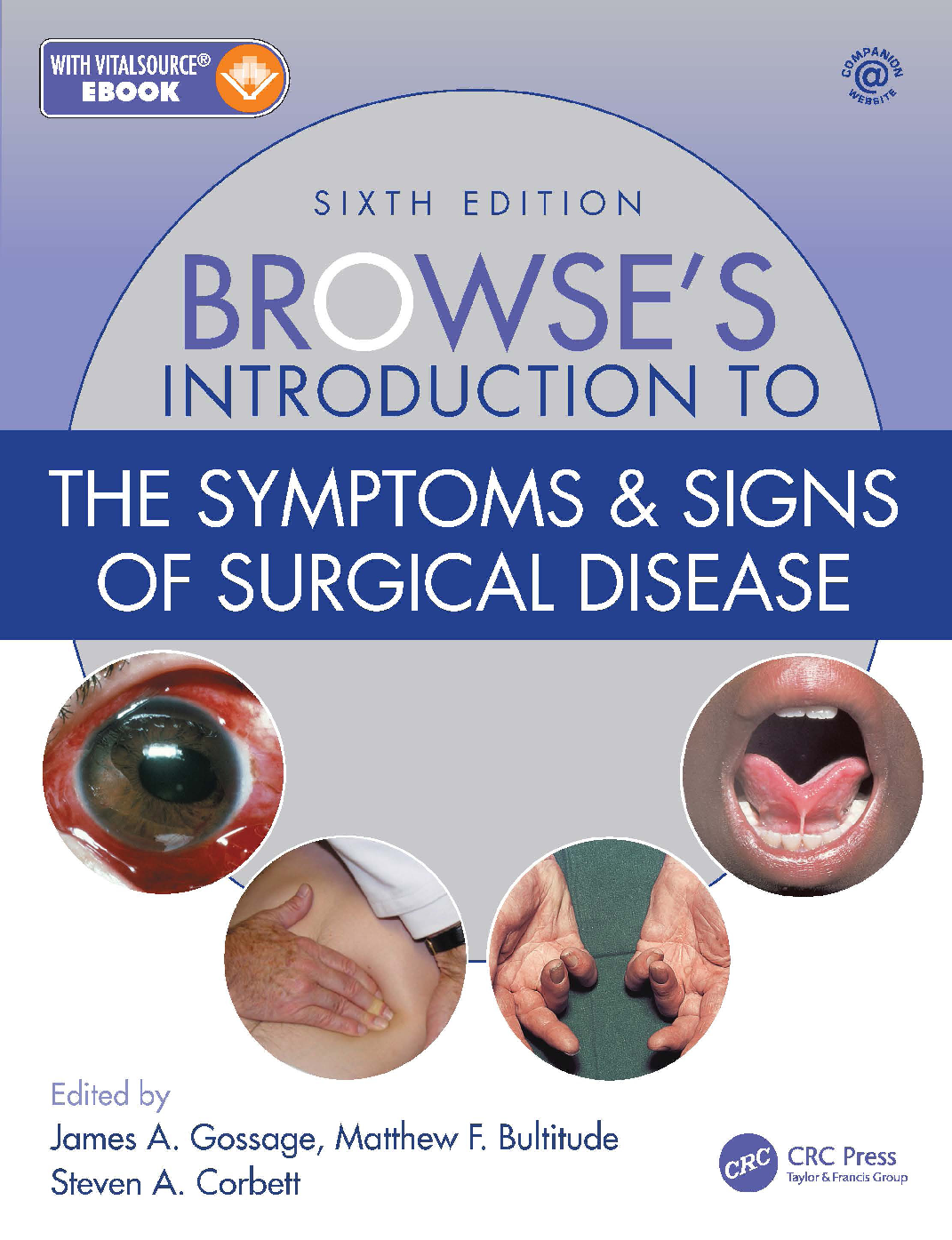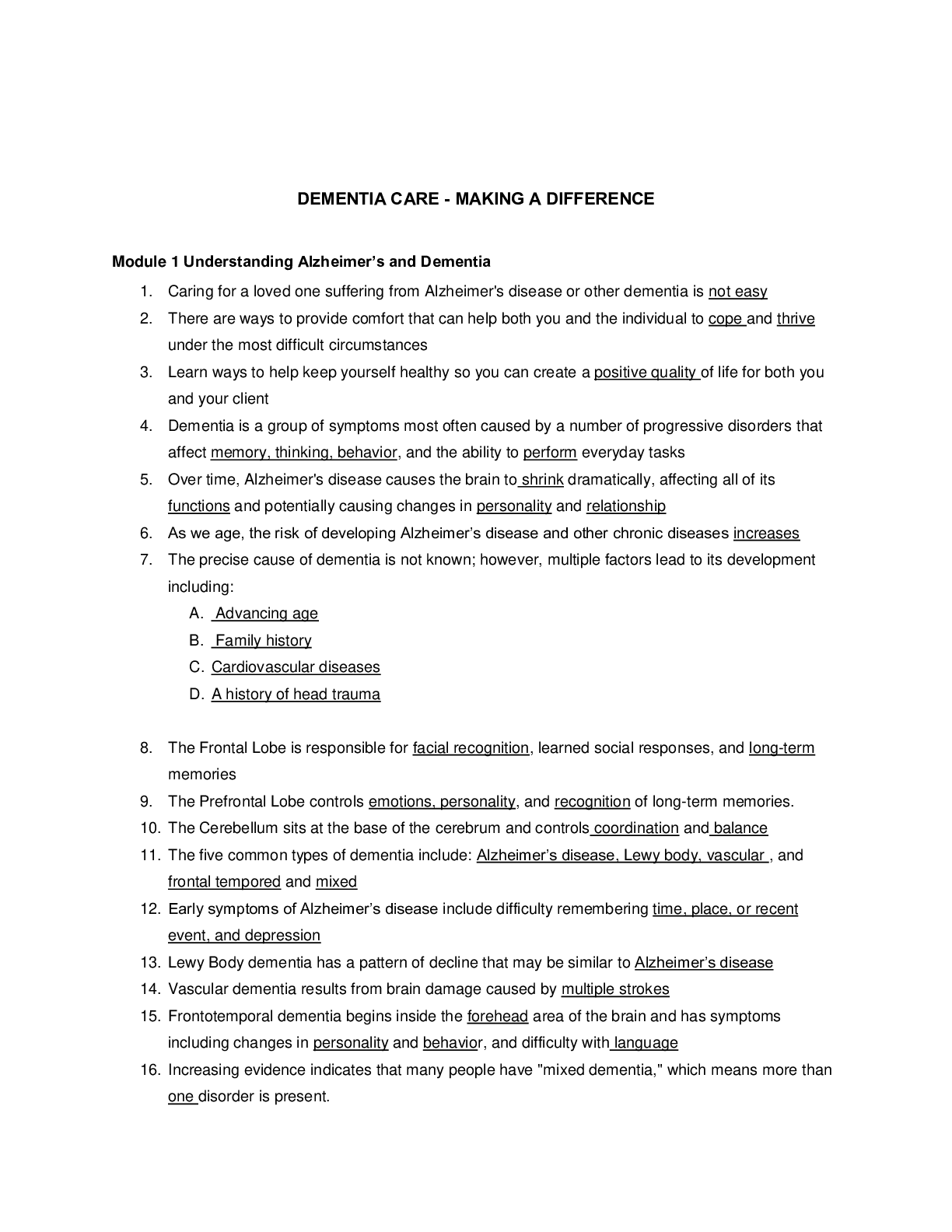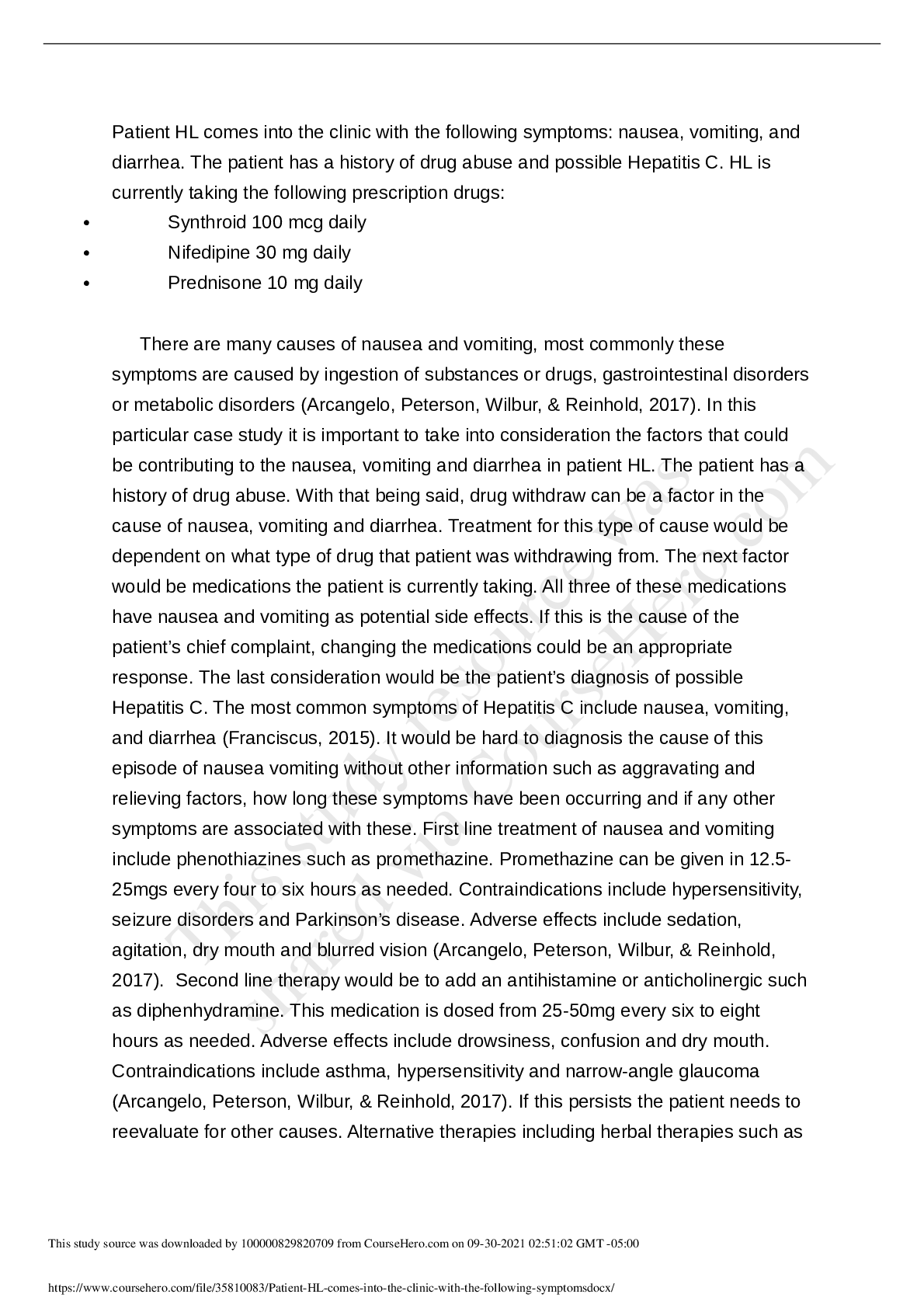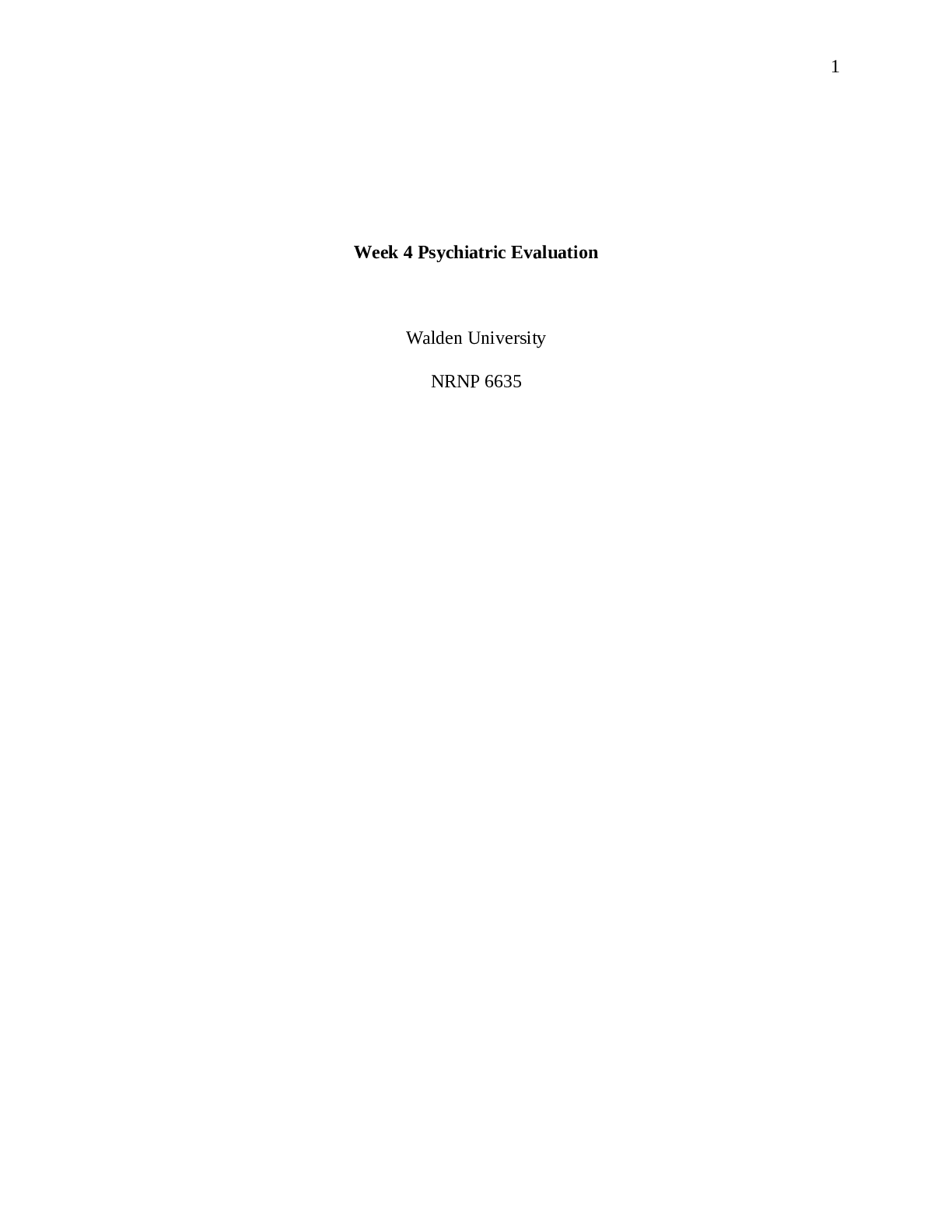Search for
Filter By
Rating
Price in $
Search Results 'Symptoms'
Showing All results
Sort by
*NURSING > eBook-PDF > Browse's Introduction to the Symptoms & Signs of Surgical Disease, 6th Edition, By James Gossage, Matthew Bultitude, Steven Corbett [PDF] [eBook] (All)
*NURSING > TEST BANK > Chapter 2. Genomic Assessment: Interpreting Findings and Formulating Differential Diagnosis MULTIPLE CHOICE 1. The first step in the genomic assessment of a patient is obtaining information regarding: A. Family history B. Environmental exposures C. Lifestyle and behaviors D. Current medications 2. An affected individual who manifests symptoms of a particular condition through whom a family with a genetic disorder is ascertained is called a(n): A. Consultand B. Consulband C. Index patient D. Proband 3. An autosomal dominant (AD) disorder involves the: A. X chromosome B. Y chromosome C. Mitochondrial DNA D. Non-sex chromosomes 4. To illustrate a union between two second cousin family members in a pedigree: A. Arrows are drawn pointing to the male and female B. Brackets are drawn around the male and female C. Double horizontal lines are drawn between the male and female D. Circles are drawn around the male and female 5. To illustrate two family members in an adoptive relationship in a pedigree: A. Arrows are drawn pointing to the male and female B. Brackets are drawn around the male and female C. Double horizontal lines are drawn between the male and female D. Circles are drawn around the male and female 6. When analyzing the pedigree for autosomal dominant (AD) disorders, it is common to see: A. Several generations of affected members B. Many consanguineous relationships C. More members of the maternal lineage affected than the paternal D. More members of the paternal lineage affected than the maternal (All)
*NURSING > QUESTIONS & ANSWERS > HESI MED SURG V1 2017-2020 EXIT EXAM MOSTLY TESTED QUESTIONS WITH CORRECT ANSWERS SOLUTION Version 1. 1. a client with stage IV bone cancer is admitted to the hospital for a 1 to 10 scale. Which intervention should the nurse implement 2. During spring break, a young adult presents at the urgent care clinic and report headache. Which intervention is most important for the nurse to implement? 3. After a colon resection for colon cancer, a male client is moaning while being transported to unit (PACU). Which intervention should the nurse implement first? 4. Which nursing problem has the highest priority when planning care for a client with osteomalacia? 5. A client who took a camping vacation two weeks ago in a country with a tropical climate comes symptoms and diarrhea for the past week. Which finding is most important for the nurse report? 6. a client admitted to a surgical unit is being evaluated for an intestinal obstruction . the healthcare prescribed nasogatric tube(NGT) to be inserted and placed to intermittent low wall suction. Which intervention –to facilitate proper tube placement? 7. when explaining dietary quidelines to a client with acute glomerulonepheritis (AGN) , which instruction should the nurse include in the dietary teaching ? 8. a client with chronic kidney disease is started on hemodialysis, during the first treatment the client’s blood pressure 150/90 mm hg to 80/30 mm hg. Which action should the nurse take first? 9. a client with urolithiasis is preparing for discharge after lithotripsy. Which intervention should the nurse spostoperative discharge instruction? 10. a client with sickle cell anemia develops a fever during the last hour of administration of a unit of packed red blood notifying the healthcare provider, what information should the nurse provide first using the SBAR (situation, background, assessment, and recommendation ) communication process? 11. Intermittent claudiation with leg pain… 12. Three months after Dx of T2DM pt and nocompliance to Tx regimen….. 13. Client with SIADH complains of dry mouth and thirsty…. 14. Client with emphysema with CT drain change from green to clear liquid. 15. Pt with multiple transplant reaction to report to HCP (healthcare prosional) 16. Fracture of left femur + fixation complain of pain. 17. Nursing care goal for preop client. 18. Iron deficiency anemia client selected food requiring further teaching. 19. CVA client with expressive aphasia frustrated. 20. 2hrs Post op laparoscopy client demanding for food. 21. Nurse assisting PD client ambulate in hallway. 22. Xenograft for a Jewish clent with burn. 23. Laryngectomy and tracheostomy expectorate copious purulent secretion. 24. Client with emphysema and HF has edema, coughing and SOB. BNP is elevated. 25. Client with Blood glucose of 50mg/dl, before action. 26: Med order = 0.1875 mg; Available= 0.3mg per 1.2 ml 27. Heparin infusion order= 900 Unit per hr; Available= 25,000 Unit per 250 ml 28. Nurse calling HCP for client complaining of pain, SBAR report pattern. 29. Nursing care with higher priority when giving care. . 30. Bone cancer client with constipation complain of pain of 8 on 1-10 scale. 31. Pt with potassium level of 6.0, med to give. 32. In teaching a client newly diagnosed with multiple sclerosis (MS), which approach should the nurse emphasize as most likely to prevent an exacerbation of symptoms? 33. While assessing a client in a supine position, the nurse observes jugular vein distention. The client’s vital signs are: heart rate 110 beats/minute, respirations 28 breaths/minute, and blood pressure 160/88. What should the nurse take? 34. A client is recovering from a transurethral prostectomy. Which activity should be limited until after the first postoperative visit with his healthcare provider/; 35. a client who has a history of hypothyroidism was initially admitted with lethargy and confusion. Which additional finding warrants the most immediate action by the nurse? 36. after a computer tomography (CT) scan with intravenous medium, a client returns to the room complaining of shortness of breath and itching. Which intervention should the nurse implement? 37. a client with newly diagnosed crohn’s disease asks the nurse about dietary restrictions. How should the nurse respond? 38. A female college student comes to the school’s health clinic complaining of urinary frequency and burning with right lower back pain. Which intervention should the nurse implement first? 39. when preparing a teaching plan for a client newly diagnosed with diabetes mellitus, the nurse should describe which situation as requiring the most immediate action by the client or family? 40. Client is about to go to physical therapy but before that is having a wound debridement(whirlpool therapy)? What should the nurse do? Give analgesic. 41. Patient taking ferrous sulfate 42. Patient complaining of pain in the back/sacrum area 43. Patient complaining of leg pain 44. Emesis basin of coffee-ground vomit 45. Dosage calculation/Heparin Drip: 46. Dosage calculation: 47. Patient complaining of abdominal pain 48. Pt with eczema how will you know the medication is working 49. COPD patient with ABGs and elevated CO2 51) After a colon resection for colon cancer, a male client is moaning while being transported to unit (PACU). Which intervention should the nurse implement first? 52) SIADH : Give hard candy for thrist 53) Emotional prepareness before surgery (All)
*NURSING > CASE STUDY > BIO - 1141L - 05; A Rough Semester: What’s Wrong with Katie? Case (answered)20 year-old white female, a college sophomore, presented at the on-campus health center with #u-like symptoms that began three weeks prior. (All)
healthcare > QUESTIONS and ANSWERS > DEMENTIA CARE – MAKING A DIFFERENCE: WORK BOOK HCA202 - HEALING 2: CARING FOR INDIVIDUALS EXPERIENCING COGNITIVE CHALLENGES GRADED A+ (All)
*NURSING > DISCUSSION POST > Patient_HL_comes_into_the_clinic_with_the_following_symptoms.2021 (All)
Health Care > HESI > 2020/2021 HESI HEALTH ASSESSMENT NURSING RN V1 100 Questions with answers 1. During a mental status examination, the nurse wants to assess a patient’s affect. The nurse should ask the patient which question? 2. The nurse is planning to assess new memory with a patient. The best way for the nurse to do this would be to: 3. A 45-year-old woman is at the clinic for a mental status assessment. In giving her the Four Unrelated Words Test, the nurse would be concerned if she could not ____ four unrelated words ____. 4. During a mental status assessment, which question by the nurse would best assess a person’s judgment? 5. Which of these individuals would the nurse consider at highest risk for a suicide attempt? 6. When reviewing the use of alcohol by older adults, the nurse notes that older adults have several characteristics that can increase the risk of alcohol use. Which would increase the bioavailability of alcohol in the blood for longer periods in the older adult? 7. During an assessment, the nurse asks a female patient, “How many alcoholic drinks do you have a week?” Which answer by the patient would indicate at-risk drinking? 8. The nurse is asking an adolescent about illicit substance abuse. The adolescent answers, “Yes, I’ve used marijuana at parties with my friends.” What is the next question the nurse should ask? 9. The nurse has completed an assessment on a patient who came to the clinic for a leg injury. As a result of the assessment, the nurse has determined that the patient has at-risk alcohol use. Which action by the nurse is most appropriate at this time? 10. A patient is brought to the emergency department. He is restless, has dilated pupils, is sweating, has a runny nose and tearing eyes, and complains of muscle and joint pains. His girlfriend thinks he has influenza, but she became concerned when his temperature went up to 39.4° C. She admits that he has been a heavy drug user, but he has been trying to stop on his own. The nurse suspects that the patient is experiencing withdrawal symptoms from which substance? 11. Patient taking ipratropium reports nausea, blurred vision, has, insomnia after using the inhaler. RN action to implement 12. A patient has suddenly developed shortness of breath and appears to be in significant respiratory distress. After calling the physician and placing the patient on oxygen, which of these actions is the best for the nurse to take when further assessing the patient? 13. The nurse is teaching a class on basic assessment skills. Which of these statements is true regarding the stethoscope and its use? 14. The nurse is preparing to use a stethoscope for auscultation. Which statement is true regarding the diaphragm of the stethoscope? The diaphragm: 15. Before auscultating the abdomen for the presence of bowel sounds on a patient, the nurse should: 16. While measuring a patient’s blood pressure, the nurse recalls that certain factors, such as __________, help determine blood pressure. 17. A nurse is helping at a health fair at a local mall. When taking blood pressures on a variety of people, the nurse keeps in mind that: 8. The nurse notices a colleague is preparing to check the blood pressure of a patient who is obese by using a standard-sized blood pressure cuff. The nurse should expect the reading to: 19. A student is late for his appointment and has rushed across campus to the health clinic. The nurse should: 20. Hypoptysis (new cough) or changes in persistent cough 21. The nurse is assessing a patient’s pain. The nurse knows that the most reliable indicator of pain would be the: 22. A patient has had arthritic pain in her hips for several years since a hip fracture. She is able to move around in her room and has not offered any complaints so far this morning. However, when asked, she states that her pain is “bad this morning” and rates it at an 8 on a 1-to-10 scale. What does the nurse suspect? The patient: 23. The nurse is reviewing the principles of pain. Which type of pain is due to an abnormal processing of the pain impulse through the peripheral or central nervous system? 24. The nurse hears bilateral loud, long, and low tones when percussing over the lungs of a 4-year-old child. The nurse should: 25. When assessing the quality of a patient’s pain, the nurse should ask which question? 26. When assessing a patient’s pain, the nurse knows that an example of visceral pain would (All)
Health Care > CASE STUDY > NRNP6635 Week 4 Psychiatric Evaluation - PF 27-year-old Caucasian male CC: PTSD symptoms (All)
Maternal Child Nursing Care > TEST BANK > Test Bank for Women's Health Care in Advanced Practice Nursing 2nd Edition by Ivy M. Alexander, Versie Johnson-Mallard, Elizabeth Kostas-Polston, Catherine Ingram Fogel & Nancy Fugate Woods - Complete, Elaborated and Latest Test Bank. ALL Chapters (1-46) Included and Updated (All)
*NURSING > STUDY GUIDE > Gynae lecture 3- signs and symptoms of pregnancy (All)










